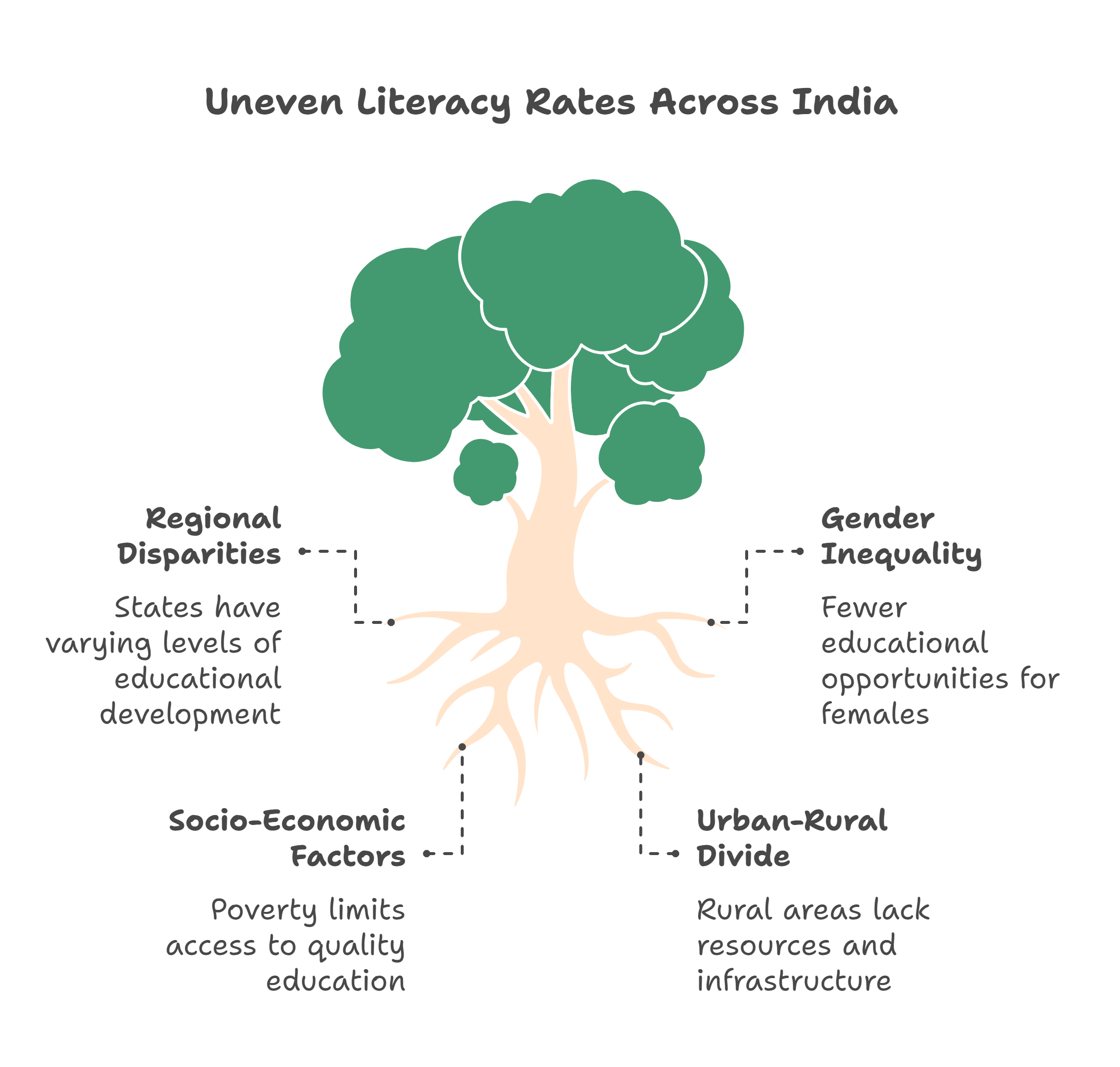Reading and writing skills are essential for personal growth, social mobility, and economic development. In India, a country with a rich literary heritage and a complex social structure, improving literacy rates presents significant challenges. There are disparities in literacy rates across various social groups, regions, and genders.

The last population census in India was conducted in February 2011, with a revisional round in March 2011. The next census was due in 2021, but it was postponed due to the COVID-19 pandemic. To carry out statistical analysis, I will be using a dataset from Kaggle, which contains census data from 2011. The census, conducted in two phases—house listing and population enumeration—covered 640 districts, 5,924 sub-districts, 7,935 towns, and over 600,000 villages. It provides a comprehensive dataset, including information on gender, religion, education, and occupation, making it a robust foundation for statistical analysis.
In this project, I tried to analyze the data to gain insights into the literacy rates of different social groups, regions, and genders in India. I hope that this analysis will shed light on the current state of literacy in India and identify areas that require more attention and resources to improve literacy rates.
The project’s objectives were threefold:
- Compare literacy rates across states with the national average, focusing on male and female literacy.
- Investigate gender disparities in literacy rates to determine if significant differences exist.
- Analyze literacy variations across religions and locations (rural vs. urban) using hypothesis testing.
The analysis employed a combination of descriptive and inferential statistical techniques, implemented using R. Key methods included:
- Shapiro-Wilk Test: This test is conducted to check the normality of literacy rate data for males and females.
- One-Way ANOVA: Used to compare means across groups (e.g., states and religions) to identify significant differences in literacy rates.
- Two-Way ANOVA: Applied to assess the effects of religion and location (urban/rural) on literacy rates, including their interaction. The results showed significant effects of both religion (p-value = 3.48e-15) and location (p-value < 2e-16), but no significant interaction effect (p-value = 0.587).
- T-Test: Conducted to compare male and female literacy rates, confirming significant gender disparities.
The R code included in the appendix of the project demonstrates the implementation of these analyses, using libraries like readxl for data import, ggplot2 for visualization, and built-in functions for statistical tests.
Findings
The analysis revealed several critical insights into India’s literacy landscape:
- State-Wise Literacy:
- Kerala led with literacy rates for both males and females well above the national average, followed by states like Himachal Pradesh, Uttarakhand, Tamil Nadu, Haryana, Karnataka, Maharashtra, and Punjab.
- States like Karnataka, Andhra Pradesh, Chhattisgarh, Gujarat, Madhya Pradesh, Odisha, and West Bengal had literacy rates around the national average.
- Below-average literacy was observed in Uttar Pradesh, Bihar, Jharkhand, Arunachal Pradesh, Assam, Jammu and Kashmir, and Rajasthan, highlighting regions needing targeted interventions.
- Gender Disparities:
- Significant differences were found between male and female literacy rates, with males generally having higher literacy. This underscores the need for policies promoting gender equality in education.
- Religion and Location Effects:
- Religion and location (urban vs. rural) both significantly influenced literacy rates. Urban areas generally exhibited higher literacy than rural areas.
- The interaction between religion and location was not significant, suggesting that the effects of these factors are largely independent.
Based on the findings, the project proposes several strategies to improve literacy in India:
- Increase Access to Education: Governments and NGOs should prioritize education as a fundamental right, expanding school infrastructure, especially in underserved regions.
- Promote Gender Equality: Targeted programs to enhance education for girls and women are essential to close the gender gap in literacy.
- Enhance Education Quality: Investments in teacher training, modern educational materials, and technology can elevate learning outcomes.
- Community Engagement: Involving local communities ensures education is relevant and meets regional needs, fostering greater participation.
This statistical study provides valuable insights into India’s literacy landscape, highlighting disparities across states, genders, religions, and locations. By identifying high-performing states like Kerala and lagging regions like Bihar, the project offers a roadmap for targeted educational interventions.
References